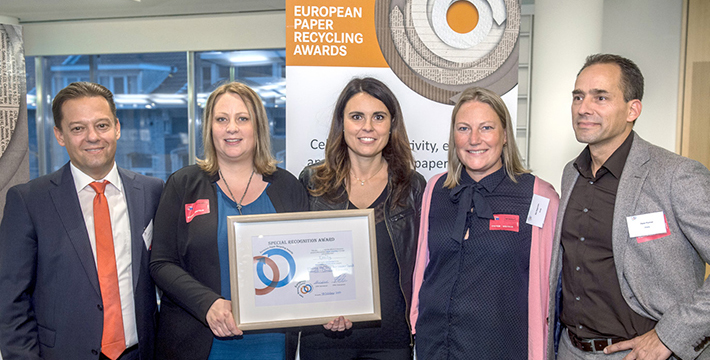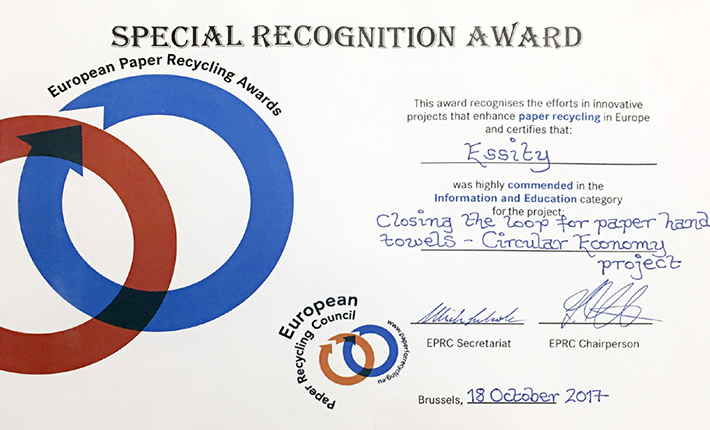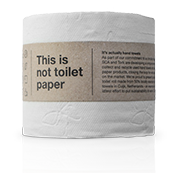After-use management
Access to hygiene and health products and solutions is vital when it comes to ensuring people’s right to good health and livelihood, and the development of society. As a company offering these products, Essity aims to assume responsibility for the entire life cycle of its products, even after they have been used.

Tork PaperCircle™
With the Tork PaperCircle™ service, Essity is helping to advance the standards for recycling of used paper hand towels. The solution is designed for customers such as universities, property companies and airports, where paper hand towels often account for a significant portion of the total volume of waste. Until now, it has been difficult to recycle paper towel due to strict hygiene requirements and technical barriers. However, our pilot projects in the Netherlands and Germany have shown that it is possible to collect used paper hand towels and send them to a nearby Essity plant, where they can be converted into tissue products. This process can reduce the product’s carbon footprint by at least 40%1).
1) For paper towel, compared with current waste handling options. Based on an LCA verified by the Swedish Environmental Research Institute (IVL) in 2017, where the rationalized processes have been taken into account.


On October 18, 2017, Essity received an honorary mention at the European Paper Recycling Awards held by the European Parliament for its work on Tork PaperCircle™.
By conducting a life cycle assessment, we can identify the areas of the value chain with the largest environmental impact and thus focus our efforts to achieve the best results. We continuously strive to make more efficient use of our resources and develop products designed to reduce consumption and thereby waste. For example, the development of thinner and more efficient products may require less material and reduce the volume of waste.
Another way of reducing our environmental impact is through responsible handling of production and post-consumer waste, thereby contributing to a sustainable and circular society. One example is our tissue, which is made using a significant portion of recovered fiber. Several of the markets where Essity operates already have the infrastructure to collect used paper and sell it to companies that use recovered fiber.
For our products in the Personal Care business area, energy recovery through combustion is a good alternative since there are currently no business models established for recycling used products. Although technologies exist for separating the various materials included in the products, the value of the new recovered materials is limited due to combinations of several different materials and impurities from bodily fluids and medicine. We work together with external partners to solve the challenges that arise in order to create attractive, competitive new recovered materials.
One path forward is our membership in CE 100 within the Ellen MacArthur Foundation. We are convinced that partnerships are the best way to develop new solutions to create value after use. In 2017, we worked together with various partners to promote the advantages of renewable materials from a circular perspective. Renewable materials have a lower climate impact and can be recycled and, in certain cases, composted.